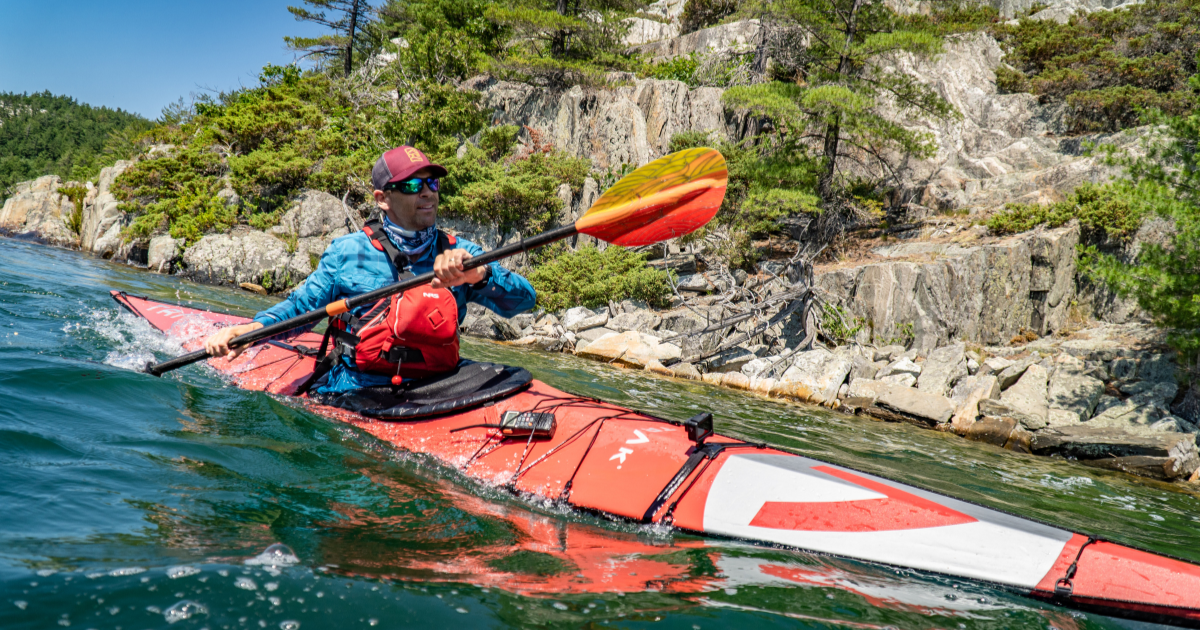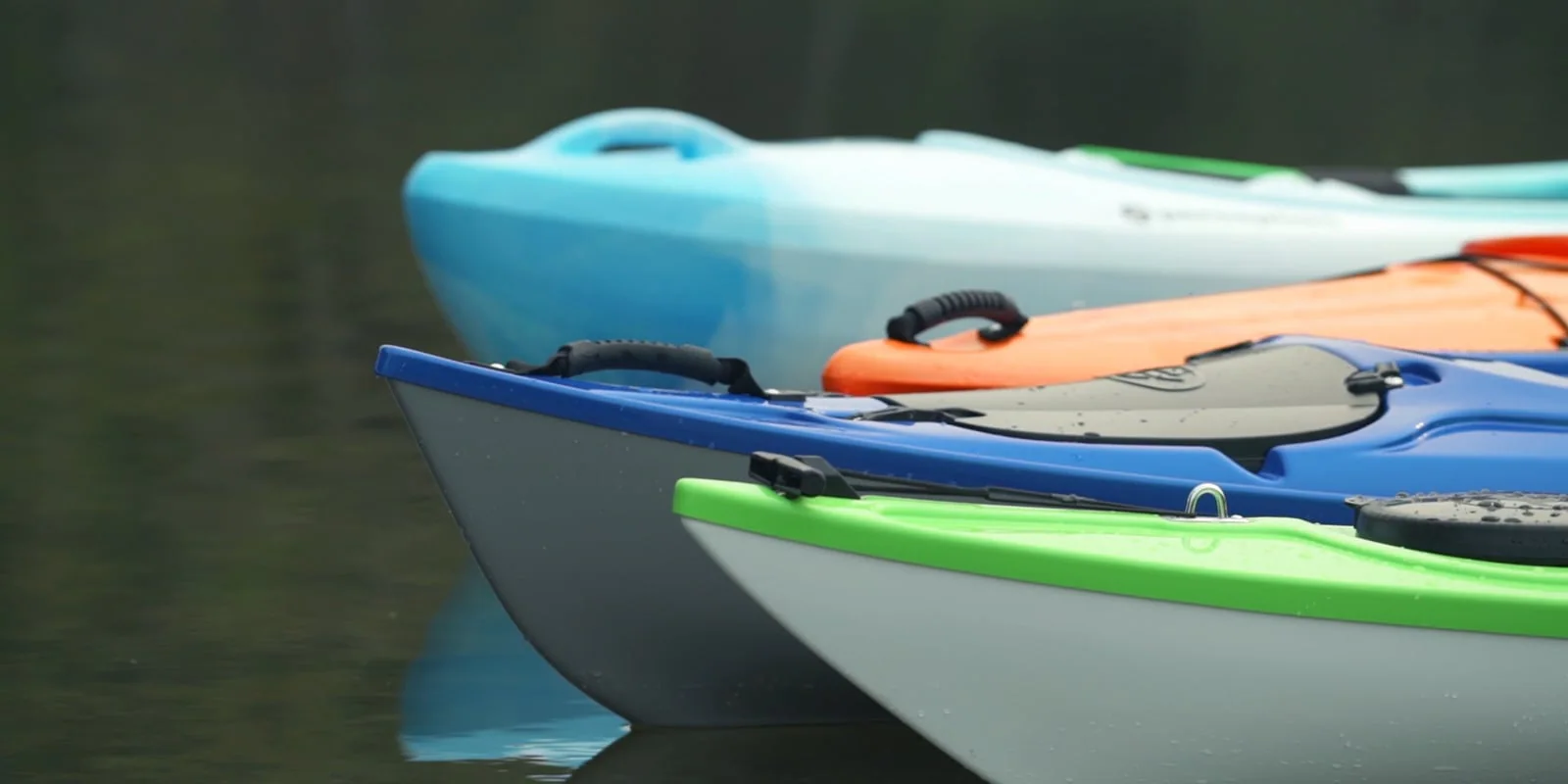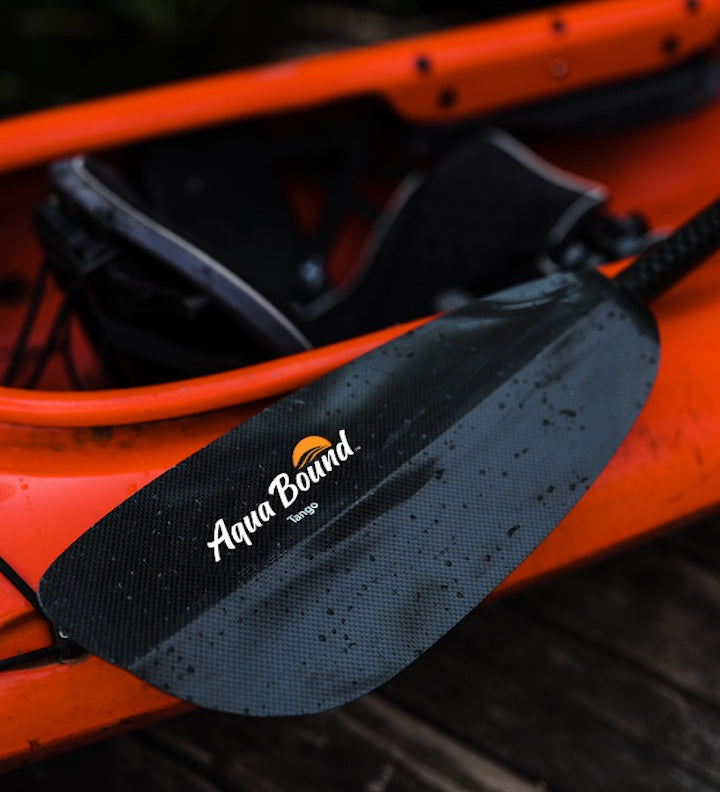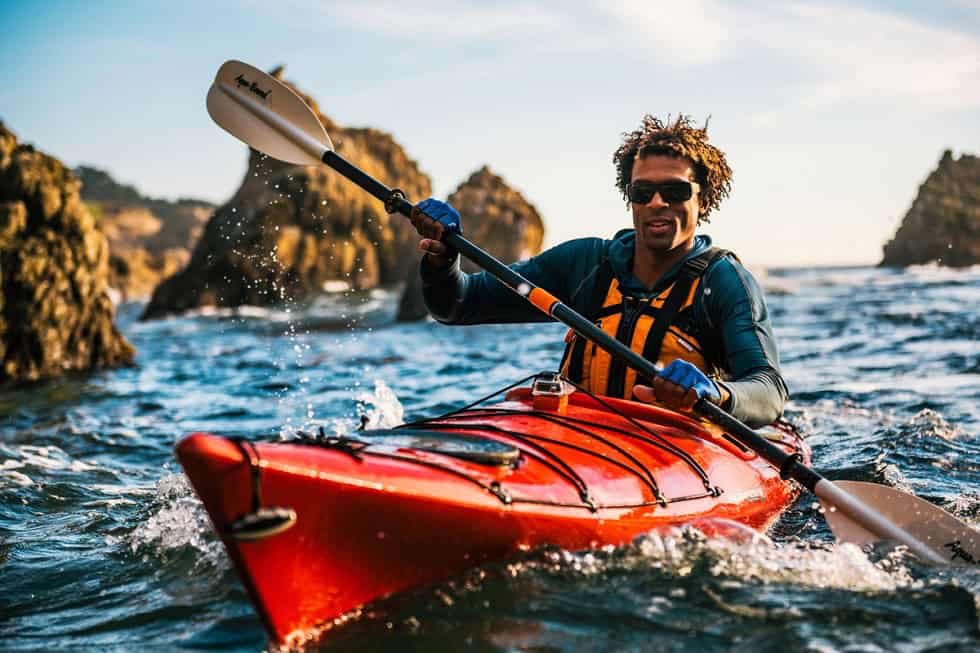Introduction

How to choose a kayak? Embarking on the journey of kayaking can be an exhilarating experience, whether you’re gliding through serene lakes or navigating the rapids of a tumultuous river.
But before you can dip your paddle into the water, you need to make an important decision: how to choose a kayak that’s perfect for your adventures.
In this article, we’ll explore the various considerations to keep in mind when selecting a kayak, ensuring that you find a vessel that not only suits your needs but also enhances your paddling experience.
Consider the type of kayaking you will be doing

Recreational kayaking
If you’re like me and enjoy leisurely paddles on calm waters, recreational kayaking might be your calling.
Recreational kayaks are typically wider for stability and shorter for easy maneuverability, making them ideal for beginners or those looking for a relaxing day on the water. They’re perfect for small lakes, rivers, and coastal waters where the conditions are mild.
Touring kayaking
For those of us who crave longer expeditions or coastal adventures, touring kayaks are the way to go. These kayaks are designed for distance and efficiency, with a longer and narrower build to cut through the water with ease.
They often come with added storage space for your gear, making them suitable for multi-day trips. The increased length also improves tracking, which is essential for maintaining a straight course over longer distances.
Whitewater kayaking
Whitewater enthusiasts need a kayak that can handle the rough and tumble of river rapids. Whitewater kayaks are shorter, with a rounded hull for quick turns and maneuvers.
They’re built to be durable and responsive, allowing paddlers like us to navigate through challenging waters with confidence. If adrenaline-pumping action is what you seek, a whitewater kayak is your trusty steed.
| Feature | Recreational Kayaking | Touring Kayaking | Whitewater Kayaking |
|---|---|---|---|
| Purpose | Leisure, casual paddling in calm waters | Extended trips on open water | Navigating fast-moving, turbulent rivers |
| Type of Water | Lakes, slow rivers, calm coastal waters | Calm lakes, open ocean, slow to moderate rivers | Fast-flowing rivers, rapids, waterfalls |
| Design | Wide, stable hull for ease of maneuvering | Longer, narrower hull for speed and efficiency | Shorter, agile hull for quick turns and maneuvers |
| Tracking | Less emphasis on tracking | Excellent tracking for straight-line paddling | Quick and responsive, less emphasis on tracking |
| Storage | Limited storage space for small items | Generous storage for gear and supplies | Limited storage due to the agile design |
| Seat Comfort | Comfort-focused, often with padded seats | Comfortable seating for extended periods | Snug-fitting and supportive for control |
| Paddling Distance | Shorter distances, casual outings | Longer distances, multi-day trips | Short to moderate distances due to rapid changes |
| Speed | Moderate speed for relaxed paddling | Faster speed due to longer, streamlined design | Fast and agile for navigating turbulent water |
| Skill Level | Beginner-friendly | Intermediate to advanced | Intermediate to advanced |
| Safety Considerations | Emphasis on stability and ease of use | Safety features for open water conditions | Emphasis on maneuverability and roll recovery |
| Types of Kayaks | Sit-on-top, recreational kayaks | Touring kayaks, sea kayaks | Whitewater kayaks, playboats, creek boats |
| Use Cases | Casual paddling, family outings | Exploration, camping trips, sea kayaking | Navigating rapids, freestyle kayaking |
Choose the right size and shape

Length and width
The size of your kayak is paramount to your experience on the water. Longer kayaks tend to track better and offer more storage, while shorter kayaks are more agile. The width, or beam, affects stability—wider kayaks are more stable, which can be reassuring for beginners.
| Type of Kayak | Length Range (Feet) | Width Range (Inches) | Description |
|---|---|---|---|
| Recreational | 8 to 12 | 26 to 30 | Shorter and wider for stability and easy maneuvering |
| Touring/Sea | 12 to 17 | 22 to 26 | Longer for speed and efficiency, narrower for tracking |
| Whitewater | 6 to 10 | 22 to 26 | Short for maneuverability, wider for stability |
| Fishing (Sit-On-Top) | 10 to 14 | 30 to 40 | Varied lengths, often wider for stability and fishing accessories |
| Tandem/Double | 14 to 20 | 28 to 36 | Longer for increased capacity, width depends on type |
| Inflatable | 8 to 16 | Varies | Length and width vary, typically more compact |
Consider your height and weight when choosing the size, as you’ll want a kayak that supports your body comfortably without compromising on performance.
Cockpit size
The cockpit is where you’ll spend most of your time, so it’s important to get it right. A larger cockpit makes it easier to get in and out of the kayak, which can be a plus for recreational use.
However, a snugger fit is preferable for touring or whitewater kayaking, as it gives you better control and allows for more efficient paddling.
Hull shape
The hull, or bottom of the kayak, plays a crucial role in how the kayak performs. A flat hull offers more stability, which is great for beginners.
A rounded hull makes the kayak more maneuverable, while a V-shaped hull enhances speed and tracking. Some kayaks also feature a combination of these shapes for a balance of attributes.
Material and weight

Plastic kayaks
Plastic kayaks are the workhorses of the kayak world—durable, affordable, and relatively lightweight. They can take a beating, which makes them a good choice for rocky conditions or if you’re tough on your gear. However, they can be heavier than their composite counterparts and might not offer the same level of performance.
Fiberglass kayaks
Fiberglass kayaks are a step up in both performance and price. They’re lighter and more rigid than plastic kayaks, which translates to better speed and responsiveness.
If you’re serious about kayaking and looking for a long-term investment, fiberglass might be the material for you.
Inflatable kayaks
Inflatable kayaks are a game-changer for those of us with limited storage space or who like to travel with our kayaks. They’re extremely portable and surprisingly durable.
While they might not offer the same performance as hard-shell kayaks, they’re a fantastic option for recreational use and calm waters.
| Feature | Plastic Kayaks | Fiberglass Kayaks | Inflatable Kayaks |
|---|---|---|---|
| Material Composition | High-density polyethylene (HDPE) or polyethylene-based plastics | Fiberglass cloth layers with epoxy resin | PVC, Hypalon, or Nitrylon materials |
| Weight | Generally heavier | Moderate weight | Lighter compared to hard-shell kayaks |
| Durability | Very durable, resistant to scratches and impacts | Durable but may be more prone to scratches and dents | Durable but can be punctured in rough conditions |
| UV Resistance | Resistant to UV rays | Requires additional UV protection coatings | May have UV protection, but exposure can degrade material over time |
| Repairability | Repairs can be made with plastic welding or adhesive patches | Repairs require fiberglass repair kits and epoxy | Repairs with patches or inflation chambers can be done easily |
| Performance | Generally stable and less responsive to subtle changes in water conditions | Lightweight and responsive, suitable for various water conditions | Versatile, good for calm waters and some whitewater |
| Cost | Often more affordable | Moderate to high cost | Generally more affordable than hard-shell kayaks |
| Transportability | Bulky and less portable | Moderately portable, may require roof racks | Highly portable, easy to deflate and transport |
| Storage | Limited storage due to size | May have storage hatches for gear | Compact when deflated, easy to store |
| Types of Kayaks | Common in recreational and sit-on-top kayaks | Common in sea kayaks, touring kayaks | Common in recreational and touring kayaks |
| Ease of Entry/Exit | Generally easy to get in and out of | Moderate ease of entry/exit | Easy to get in and out of |
| Use Cases | Recreational paddling, beginners | Touring, sea kayaking, experienced paddlers | Recreational paddling, travel, easy transport |
Consider the features

Storage options
Depending on the type of kayaking you’re into, storage might be a big concern. Touring kayaks often come with sealed hatches and bulkheads for waterproof storage, while recreational kayaks might have open storage with bungee cords. Think about what you’ll need to bring along on your trips and choose accordingly.
Seating and comfort
Comfort is key, especially if you plan on spending hours on the water. Look for kayaks with adjustable seats, ample padding, and ergonomic designs. Adjustable footrests can also make a big difference in your comfort and paddling efficiency.
Tracking and stability
Tracking refers to how well a kayak maintains a straight line, while stability is about how easily it stays upright. Beginners might prioritize stability, whereas more experienced kayakers might look for a kayak with better tracking. Some kayaks come with a skeg or rudder to aid in tracking, which can be particularly useful in windy conditions or strong currents.
Test before you buy

We wouldn’t buy a car without taking it for a test drive, and the same should go for a kayak. If possible, rent or demo different models to get a feel for how they handle on the water. This hands-on experience can be invaluable in making your final decision. Here is a list of actions:
- Research and Identify Your Needs:
- Determine the type of kayaking you plan to do (recreational, touring, whitewater, etc.).
- Consider your skill level, preferred water conditions, and storage/transportation options.
- Visit a Kayak Retailer or Rental Center:
- Visit a local kayak shop or rental center that allows testing.
- Speak with knowledgeable staff who can provide guidance based on your requirements.
- Ask for Recommendations:
- Consult with experts or staff at the store for kayak recommendations based on your needs.
- Consider factors like stability, tracking, and maneuverability.
- Check Kayak Specifications:
- Review the specifications of the kayak you’re interested in, including length, width, weight capacity, and features.
- Ensure it fits your body size and weight.
- Inspect the Kayak:
- Inspect the kayak for any visible damage, scratches, or imperfections.
- Check the quality of materials and construction.
- Sit In and Paddle:
- Sit in the kayak to check comfort and cockpit size.
- Paddle the kayak in a controlled environment, such as a pool or calm water.
- Assess Stability:
- Test the kayak’s stability by rocking it from side to side.
- Determine if the kayak suits your comfort level in terms of primary and secondary stability.
- Evaluate Maneuverability:
- Paddle the kayak through different maneuvers to assess its responsiveness.
- Test turning, tracking, and overall maneuverability.
- Check for Comfort:
- Evaluate the comfort of the seat and the legroom.
- Consider adjustable footrests and backrests.
- Test Water Entry/Exit:
- Practice getting in and out of the kayak to ensure ease of entry and exit.
- Consider Storage and Transport:
- If applicable, check the kayak’s storage options, including hatches and compartments.
- Assess how easy it is to transport and store the kayak.
- Ask About a Return Policy:
- Inquire about the store’s return policy in case the kayak doesn’t meet your expectations.
- Get Feedback:
- If possible, talk to other kayakers or read reviews to get additional feedback on the model you’re interested in.
- Test Multiple Models:
- If you have narrowed down your options, test multiple kayak models to compare.
Remember that personal preferences and comfort are essential when choosing a kayak. Take your time during the testing process to ensure you make an informed decision that aligns with your kayaking goals.
Popular Kayak Brands And Products

Here are some popular kayak brands along with a couple of examples of their products:
- Hobie:
- Product Example: Hobie Mirage Outback (Pedal Drive Fishing Kayak)
- Dagger:
- Product Example: Dagger Stratos 14.5 L (Touring Kayak)
- Perception Kayaks:
- Product Example: Perception Pescador Pro 12.0 (Fishing Kayak)
- Ocean Kayak:
- Product Example: Ocean Kayak Malibu Two XL (Tandem Sit-On-Top Kayak)
- Old Town:
- Product Example: Old Town Predator PDL (Pedal Drive Fishing Kayak)
- Wilderness Systems:
- Product Example: Wilderness Systems Pungo 120 (Recreational Kayak)
- Jackson Kayak:
- Product Example: Jackson Kayak Antix (Whitewater Kayak)
- Native Watercraft:
- Product Example: Native Watercraft Slayer Propel 13 (Pedal Fishing Kayak)
- Pelican Kayaks:
- Product Example: Pelican Premium Catch 100 (Fishing Kayak)
- Bonafide Kayaks:
- Product Example: Bonafide SS127 (Sit-On-Top Fishing Kayak)
- NRS (Northwest River Supplies):
- Product Example: NRS Pike Fishing Inflatable Kayak
- Aire Kayaks:
- Product Example: Aire Lynx II (Inflatable Tandem Kayak)
Before making a purchase, consider the type of kayaking you plan to do, your skill level, and any specific features you need.
Conclusion on how to choose a kayak

Choosing the right kayak is a personal journey that should be approached with careful consideration of your intended use, comfort, and performance needs.
By understanding the different types of kayaking, the importance of size and shape, the materials available, and the various features that can enhance your experience, you’re well on your way to finding the perfect kayak.
Remember to test different models and trust your instincts—you’ll be paddling your ideal kayak in no time.
FAQ on how to choose a kayak
-
What should I look for in a kayak?
Length and depth: Longer boats are more efficient cruisers, and shorter ones turn better. Consider how much maneuverability and storage space you need. Deeper hulls give you more legroom and storage, but shallower ones are more resilient in the wind. Width: The wider your kayak, the more stable you are.
-
How do I choose a kayak for beginners?
Qualities that make a kayak good for beginners include stability, a safe on-water feel and features that make a paddler comfortable while enhancing their safety on the water.
-
How do I choose the right size kayak?
The length and width of a kayak are important factors to consider when choosing the right size. As discussed earlier, longer kayaks are generally faster and more stable, while shorter kayaks are more maneuverable. Similarly, wider kayaks are generally more stable, while narrower kayaks are faster and easier to paddle.

